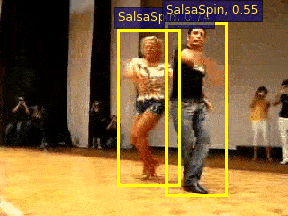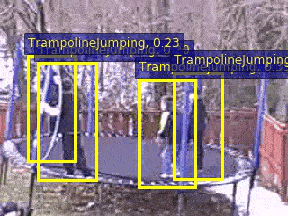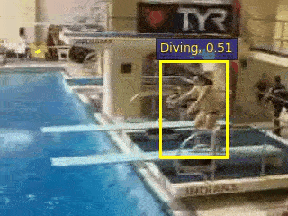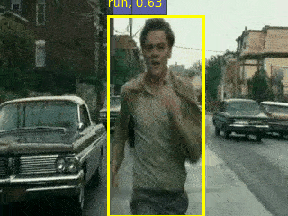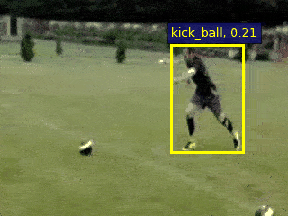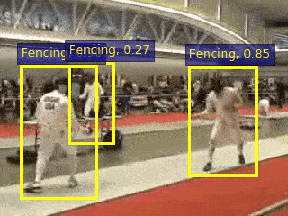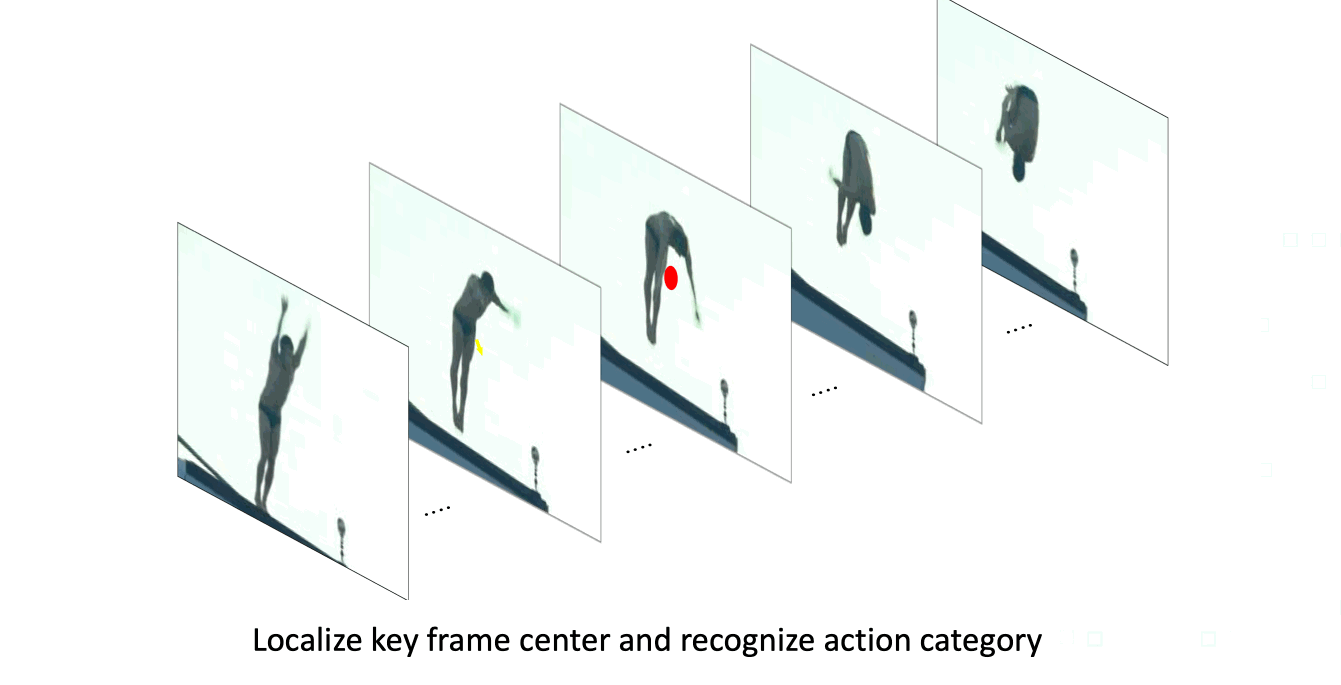Pytorch implementation of Actions as Moving Points (ECCV 2020).
View each action instance as a trajectory of moving points.
Visualization results on validation set. (GIFs will take a few minutes to load......)
(Note that the relative low scores are due to the property of the focal loss.)
Jul. 08, 2020 - First release of codes.
Jul. 24, 2020 - Update ucf-pretrained JHMDB model and speed test codes.
We present a new action tubelet detection framework, termed as MovingCenter Detector (MOC-detector), by treating an action instance as a trajectory of moving points. MOC-detector is decomposed into three crucial head branches:
- (1) Center Branch for instance center detection and action recognition.
- (2) Movement Branch for movement estimation at adjacent frames to form moving point trajectories.
- (3) Box Branch for spatial extent detection by directly regressing bounding box size at the estimated center point of each frame.
Please refer to Installation.md for installation instructions.
Please refer to Dataset.md for dataset setup instructions.
After Installation.md and Dataset.md, you can follow the instructions in Evaluation.md to evaluate our model and reproduce the results in original paper.
After Installation.md and Dataset.md, you can follow the instructions in Train.md to reproduce our experiments.
-
Data augmentation codes from ACT.
-
Evaluation codes from ACT.
-
DLA-34 backbone codes from CenterNet.
See more in NOTICE
If you find this code is useful in your research, please cite:
@InProceedings{li2020actions,
title={Actions as Moving Points},
author={Yixuan Li and Zixu Wang and Limin Wang and Gangshan Wu},
booktitle={arXiv preprint arXiv:2001.04608},
year={2020}
}